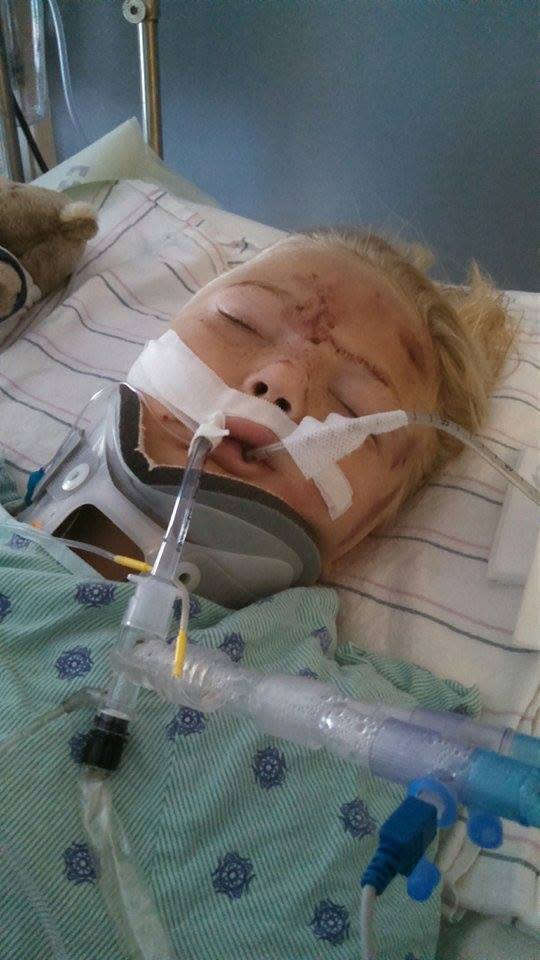Mom Posts Urgent Warning After Seat Belt Severely Injures Her 6-Year-Old

My 8-year-old, who barely weighs 50 pounds, always gives me a hard time about the fact that I still make her ride in a booster seat in the car, especially because many of her friends' parents no longer require them to ride in one. But after hearing this mom's urgent warning about what happened to her little girl during a terrible car crash, I'm more convinced than ever that, despite my daughter's gripes, I'm making the right call.
Shelly Martin of Richmond, Virginia says her 6-year-old daughter Samantha Swartwout's severe injuries could have been prevented if she were in a booster seat when the car she was traveling in crashed.
According to the family's GoFundMe page, "The impact of the collision was such that the belt that was on the child opened up her abdomen area exposing her intestines. She also suffered severe head trauma."
"Her intestines were out on scene on the left side," Martin told CBS News. Now, the devastated mom says, "She would not have been this hurt in a booster. Don't think that just because your child is 7 or 8 years that they are too big...they aren't!" She adds, "If we can raise awareness and save another child then at least we can bring something good out of this."
Want the latest parenting news? Sign up for our Parents Daily newsletter
Samantha was in the ICU for three weeks following her accident, and was just released in late October.
It's worth noting that laws vary state-to-state on what age a child should remain in a booster seat. But the AAP and National Highway Traffic Safety Administration both recommend that once a child outgrows her forward-facing car seat (by reaching the upper height or weight limit of the seat, designated by the manufacturer), she should ride in a belt-positioning booster seat until at least age 8 or until the seat belt fits correctly, which is typically when the child reaches a height of 57 inches. You'll know the belt fits properly when the lap belt lays across the upper thighs (not the stomach) and the shoulder belt lays across the chest (not the neck). Booster seats reduce the risk of serious injury by 45 percent for kids ages 4 to 8. Additionally, kids should ride in the back seat until they are 13 years of age, to reduce the risk of injury from air bag deployment.
If you're interested in helping Samantha's family, visit their GoFundMe page.
Melissa Willets is a writer/blogger and a mom. Find her on Facebook where she chronicles her life momming under the influence. Of coffee.

